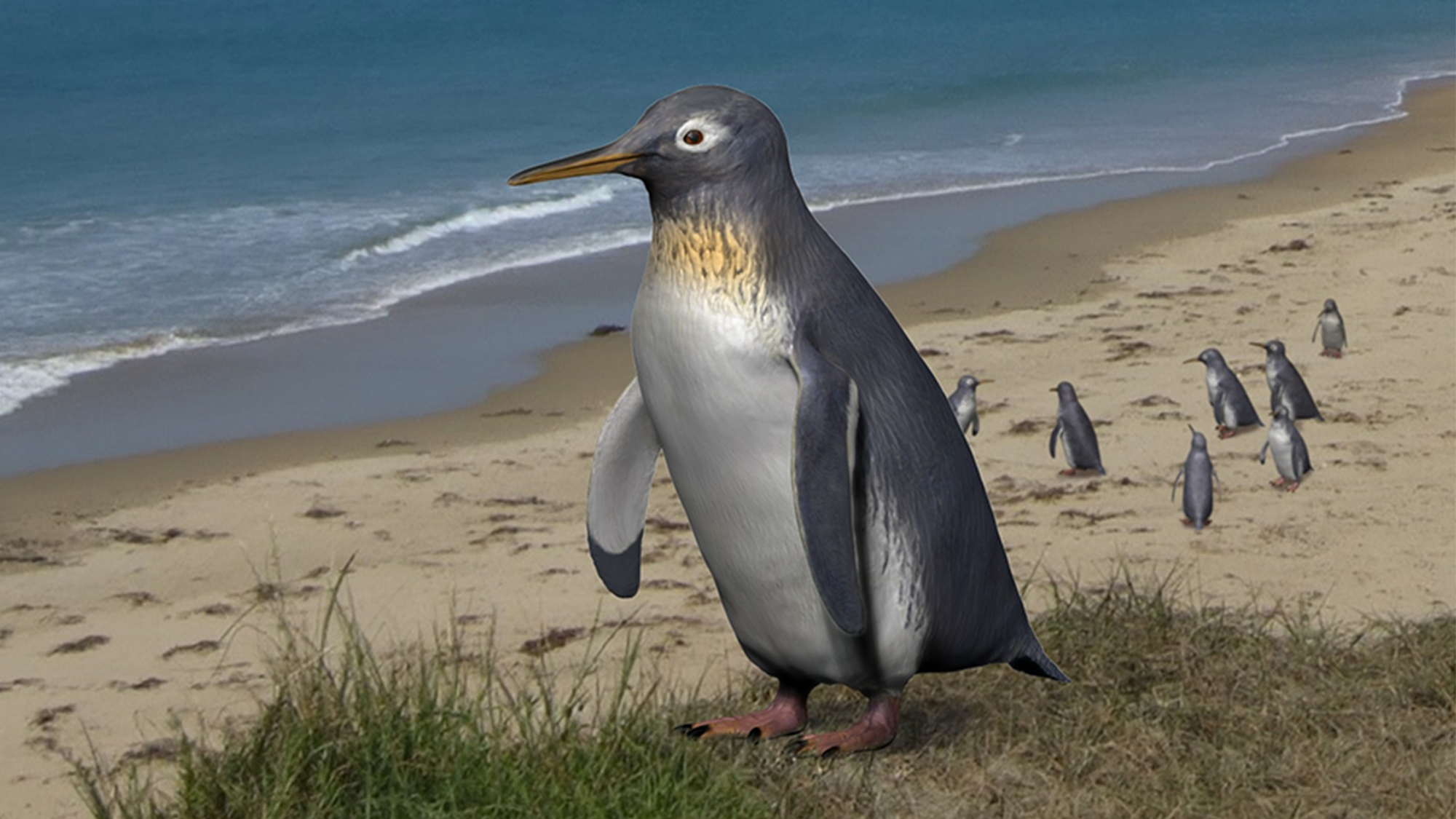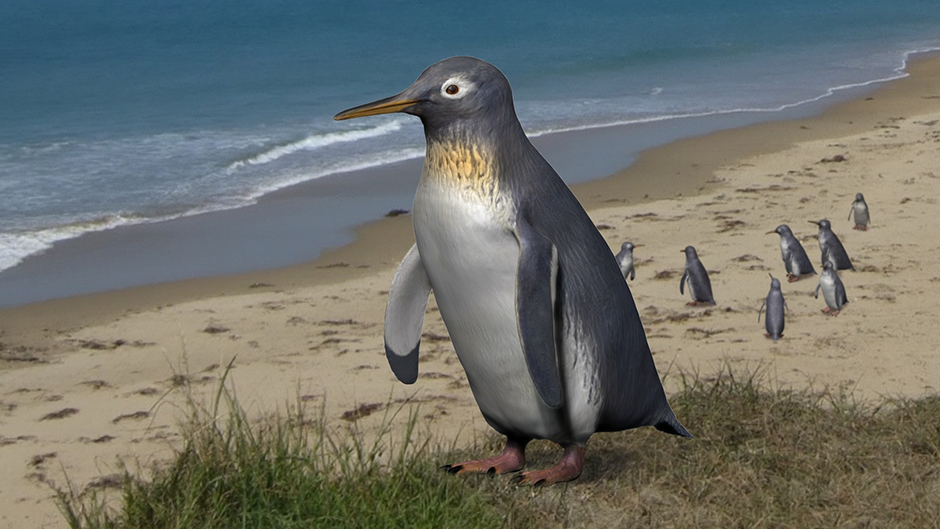Pakudyptes hakataramea is a newly identified species of extinct penguin that lived approximately 24 million years ago during the Late Oligocene epoch.

Also Read: Komodo Dragons have Iron-Coated, Serrated Teeth, Study Reveals
The species name combines the Māori word “paku,” meaning “small,” with the Greek word dyptes, meaning “diver.”
With a height of around 11.8 to 13.8 inches (30 to 35 centimeters), Pakudyptes hakataramea was about the size of modern little blue penguins (Eudyptula minor) and the extinct Wilson’s little penguins (Eudyptula wilsonae), it is one of the smallest penguins ever discovered.
The fossilized remains of Pakudyptes hakataramea were first discovered in the 1980s but were only analyzed and identified as a new speciesb recently.
The fossils were found in the Hakataramea Quarry in South Canterbury, New Zealand, by paleontologists Craig Jones and Professor Ewan Fordyce.
The fossils consist of three key bones, the humerus, femur and ulna.
The research team used advanced computed tomography (CT) scanning to create a detailed 3D model of the fossils allowing for a comparison with both modern and extinct penguin species.
The discovery of Pakudyptes hakataramea is important because it provides evidence of a transitional stage in penguin evolution.
Its unique combination of anatomical features links older fossil penguins with modern species shows how penguin wings evolved.
One of the findings is the combination of shoulder joints similar to those of modern penguins and elbow joints that resemble older fossil penguins.
The bones of Pakudyptes hakataramea show adaptations for a diving lifestyle with dense, thick bones that would have aided in swimming and diving similar to modern penguins. The bone structure suggests that this penguin was well-suited for life in shallow waters.
The fossil remains of Pakudyptes hakataramea were discovered in the Hakataramea Valley, located in the Canterbury region on the South Island of New Zealand.
This region is known for its rich paleontological sites and these fossils were found near the town of Duntroon, approximately 1,000 kilometers southwest of Auckland.
The fossils were unearthed during field trips in 1987 by the late paleontologist Ewan Fordyce. It wasn’t until recent years that scientists from the University of Otago in New Zealand along with researchers from Japan’s Ashoro Museum of Paleontology, Okayama University of Science and Osaka University began to analyze the specimens.
Pakudyptes hakataramea was small comparable to the modern little blue penguin or kororā, which is the smallest living penguin species today.
It stood at only about 9.8 inches tall and weighed approximately 2.2 pounds and it is one of the smallest known penguin species to have ever existed.
Also Read: Stress in Humans can Affect Dogs Mood and Choices, Study Reveals
While Pakudyptes was small with some ancient species standing as tall as 4.5 to 6 feet. This sets Pakudyptes apart as an early representation of the smaller-bodied penguins that we are familiar with today.
The bones of Pakudyptes show a combination of features indicating that its wings were already adapted for aquatic life despite being such an early species.
The elbow joints of Pakudyptes were more similar to those of older fossil penguins.
The humerus and ulna bones of Pakudyptes reveal spots where muscles and ligaments attached, which played a crucial role in its swimming abilities.
The bones were dense and thick, a trait seen in modern penguins that aids in buoyancy and efficient swimming.
The internal structure of Pakudyptes’ bones analyzed using cone-beam CT scanning and micro-CT scanning showed a thick bone cortex with an open medullary cavity.
The Late Oligocene epoch, which spanned from 33.9 million to 23.03 million years ago, was a time of environmental change.
The Early Miocene epoch (23.03 million to 5.3 million years ago) saw evolutionary developments in many animal groups including penguins.
Like modern penguins Pakudyptes hakataramea had dense bones, which would have aided in diving by reducing buoyancy. The bone cortex was thick and the medullary cavity was open similar to what is seen in little blue penguins.
The bone structure indicates that Pakudyptes hakataramea was adapted for swimming in shallow waters similar to the habits of the modern little blue penguin.
During the late Oligocene (34–23 million years ago), the climate worldwide was characterized by drying conditions leading to the receding of forests and the expansion of grasslands and prairies.
New Zealand has been home to some of the largest penguins ever discovered. A penguin species from 55 million years ago was as tall as a human and weighed around 150 kilograms.
Also Read: Possible Signs of Life in Venus’s Atmosphere, Scientists Reveal
























